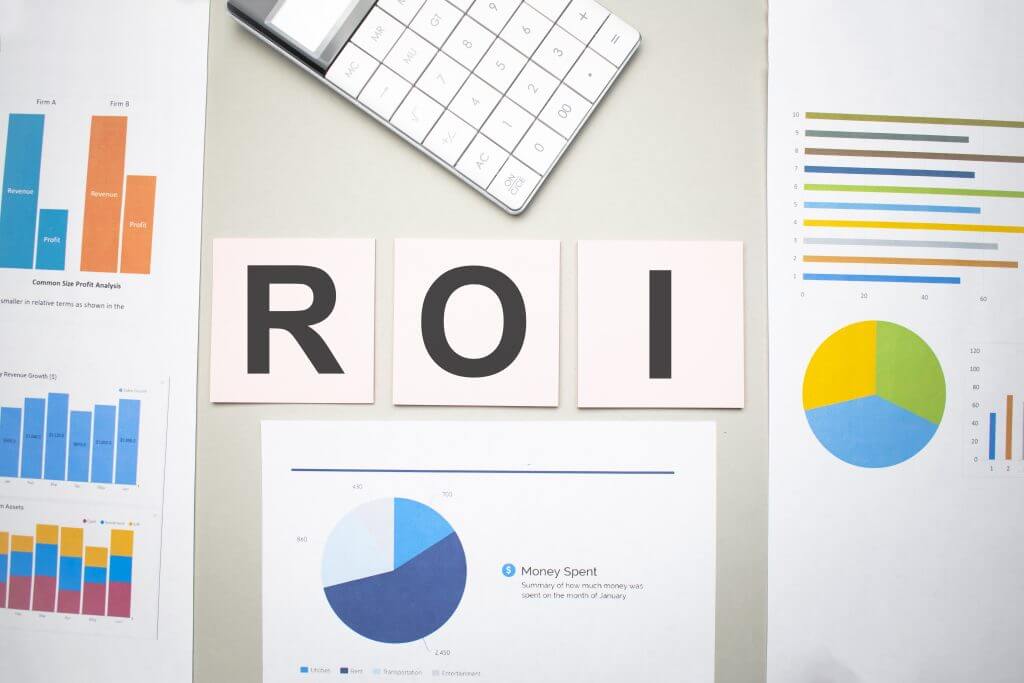
In the ever-evolving landscape of digital marketing, one thing remains constant: the need to measure return on investment (ROI). Demonstrating the effectiveness of marketing efforts is crucial for justifying budgets, refining strategies, and achieving business objectives. And the key to unlocking this insight lies in the world of analytics. In this blog, we’ll explore the significant role analytics plays in measuring marketing ROI and how it empowers businesses to make data-driven decisions.
The Challenge of Measuring Marketing ROI

Marketing ROI is a measure of the profitability of your marketing campaigns. It answers the fundamental question: “Are we getting more out of our marketing investments than we’re putting in?” However, calculating ROI in marketing isn’t always straightforward. Unlike some business functions where the inputs and outputs are clear-cut, marketing involves a multitude of variables and channels that can make it challenging to determine the direct impact of specific efforts on revenue.
Some common challenges in measuring marketing ROI include:
- Multi-Channel Complexity: Modern marketing often spans various channels, both online and offline, making it difficult to attribute conversions to a single source accurately.
- Longer Sales Cycles: In industries like B2B, where sales cycles can be lengthy, it’s harder to link initial marketing touchpoints to eventual conversions.
- Marketing Mix Models: Determining how much credit each marketing channel deserves in the overall conversion process requires advanced modeling techniques.
- Data Fragmentation: Data can be scattered across different platforms, and consolidating it for analysis can be time-consuming.
The Role of Analytics in Measuring Marketing ROI

Analytics comes to the rescue by providing the tools and insights needed to navigate the complex world of marketing ROI measurement. Here’s how analytics plays a pivotal role:
1. Data Collection and Integration
The foundation of effective marketing analytics is data. Analytics platforms allow businesses to collect and consolidate data from various sources, including websites, social media, email marketing, CRM systems, and more. By centralizing this data, organizations gain a holistic view of customer interactions and touchpoints.
2. Attribution Modeling
Attribution modeling is the process of assigning value to different marketing touchpoints along the customer journey. Analytics tools enable businesses to create customized attribution models that suit their unique circumstances. Common attribution models include first-touch, last-touch, linear, and time-decay attribution.
3. Conversion Tracking
Analytics platforms facilitate conversion tracking by monitoring user interactions with websites and marketing materials. Businesses can set up goals and track specific actions, such as form submissions, product purchases, or video views. This data is essential for calculating ROI.
4. Performance Metrics
Analytics tools provide a wealth of performance metrics, such as click-through rates, conversion rates, bounce rates, and more. These metrics help marketers assess the effectiveness of specific campaigns and identify areas for improvement.
5. A/B Testing and Experimentation
A/B testing, or split testing, is a powerful method for optimizing marketing efforts. Analytics tools enable marketers to create controlled experiments and compare the performance of two or more variations of a campaign or webpage. By measuring conversions and user behavior, organizations can determine which version drives better results.
6. Customer Segmentation
Analytics allows for sophisticated customer segmentation. By dividing the audience into groups based on demographics, behaviors, or other criteria, marketers can tailor their campaigns to specific segments and improve relevancy, ultimately increasing ROI.
7. Predictive Analytics
Predictive analytics leverages historical data and machine learning algorithms to forecast future outcomes. Marketers can use predictive analytics to anticipate customer behavior, optimize advertising spend, and allocate resources more effectively.
8. Real-Time Monitoring
Marketing analytics often provides real-time or near-real-time data, allowing businesses to monitor campaign performance as it unfolds. This enables timely adjustments and the ability to seize opportunities or mitigate issues promptly.
The Metrics That Matter
When it comes to measuring marketing ROI, specific metrics take center stage. Here are some essential metrics that analytics tools help businesses track:
- Customer Acquisition Cost (CAC): CAC calculates how much it costs to acquire a new customer. By comparing CAC to customer lifetime value (CLV), businesses can assess the sustainability of their marketing efforts.
- Return on Advertising Spend (ROAS): ROAS measures the revenue generated for every dollar spent on advertising. It’s a crucial metric for paid advertising campaigns.
- Conversion Rate: Conversion rate measures the percentage of users who take a desired action, such as making a purchase or signing up for a newsletter. Improving conversion rates can directly impact ROI.
- Customer Lifetime Value (CLV): CLV estimates the total revenue a business can expect from a customer throughout their relationship. A higher CLV often justifies higher marketing investments.
- Marketing-Generated Revenue: This metric calculates the revenue directly attributed to marketing efforts. It quantifies the impact of marketing on the bottom line.
- Marketing ROI: The ultimate metric, marketing ROI, compares the gain from marketing investments to the cost. A positive ROI indicates that marketing efforts are profitable.
Real-World Example: Google Analytics
Google Analytics is a widely used analytics platform that offers a range of tools and features for measuring marketing ROI. Here’s how it helps businesses:
– Conversion Tracking: Google Analytics allows businesses to set up goals and track conversions. Whether it’s a completed purchase or a lead form submission, it provides insights into which marketing channels are driving results.
– E-commerce Tracking: For online retailers, Google Analytics offers e-commerce tracking, enabling businesses to measure revenue, average order value, and product performance.
– Multi-Channel Funnels: This feature helps organizations understand how different channels contribute to conversions. It tracks the customer journey across multiple touchpoints.
– Audience Segmentation: Google Analytics provides robust audience segmentation capabilities, allowing businesses to tailor their messaging and campaigns to specific audience segments.
Measuring marketing ROI is a critical practice for businesses seeking to optimize their marketing efforts and allocate resources effectively. Analytics tools play a central role in this process by collecting data, providing insights, and enabling businesses to make data-driven decisions. With the right analytics strategy and tools in place, organizations can not only measure their marketing ROI but also continually refine their strategies for better results. In a data-centric world, analytics is the compass that guides marketing endeavors toward greater success.



